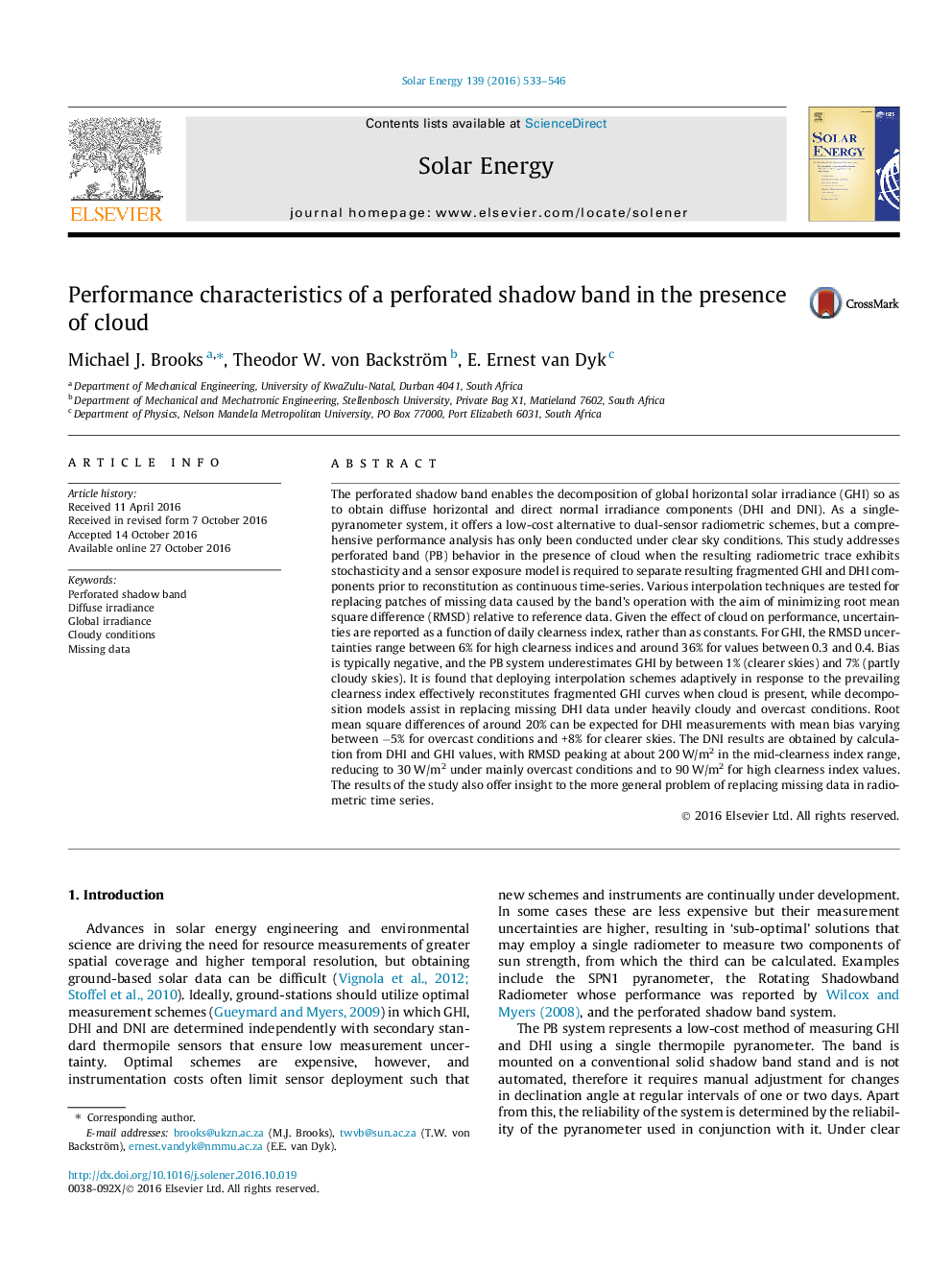| Article ID | Journal | Published Year | Pages | File Type |
|---|---|---|---|---|
| 5451415 | Solar Energy | 2016 | 14 Pages |
Abstract
The perforated shadow band enables the decomposition of global horizontal solar irradiance (GHI) so as to obtain diffuse horizontal and direct normal irradiance components (DHI and DNI). As a single-pyranometer system, it offers a low-cost alternative to dual-sensor radiometric schemes, but a comprehensive performance analysis has only been conducted under clear sky conditions. This study addresses perforated band (PB) behavior in the presence of cloud when the resulting radiometric trace exhibits stochasticity and a sensor exposure model is required to separate resulting fragmented GHI and DHI components prior to reconstitution as continuous time-series. Various interpolation techniques are tested for replacing patches of missing data caused by the band's operation with the aim of minimizing root mean square difference (RMSD) relative to reference data. Given the effect of cloud on performance, uncertainties are reported as a function of daily clearness index, rather than as constants. For GHI, the RMSD uncertainties range between 6% for high clearness indices and around 36% for values between 0.3 and 0.4. Bias is typically negative, and the PB system underestimates GHI by between 1% (clearer skies) and 7% (partly cloudy skies). It is found that deploying interpolation schemes adaptively in response to the prevailing clearness index effectively reconstitutes fragmented GHI curves when cloud is present, while decomposition models assist in replacing missing DHI data under heavily cloudy and overcast conditions. Root mean square differences of around 20% can be expected for DHI measurements with mean bias varying between â5% for overcast conditions and +8% for clearer skies. The DNI results are obtained by calculation from DHI and GHI values, with RMSD peaking at about 200Â W/m2 in the mid-clearness index range, reducing to 30Â W/m2 under mainly overcast conditions and to 90Â W/m2 for high clearness index values. The results of the study also offer insight to the more general problem of replacing missing data in radiometric time series.
Related Topics
Physical Sciences and Engineering
Energy
Renewable Energy, Sustainability and the Environment
Authors
Michael J. Brooks, Theodor W. von Backström, E. Ernest van Dyk,
